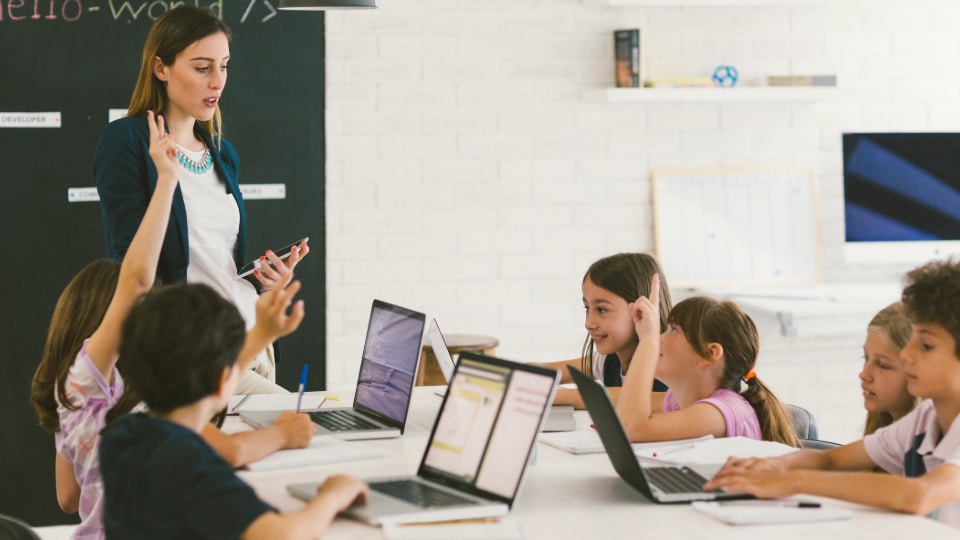
Tech vs Tradition – How to balance modern education
In today’s digital age, technology has become an integral part of education. From computers and iPads to specialized software, students are now equipped with digital resources from a young age. However, this shift raises important questions: are core skills like reading and writing being sidelined for digital innovations?
The adoption of digital tools in classrooms has been growing during the last couple of years. According to a report by the National Center for Education Statistics, 94% of U.S. schools reported providing students with digital devices for learning purposes. This common use of technology aims to meet the different ways children learn, giving them interactive and personalized learning experiences.
Is basic knowledge left out?
However, the growing use of digital devices in schools has also raised concerns about how they affect basic learning. Some argue that traditional teaching methods are being replaced by flashy gadgets, leaving students without the most basic knowledge. Yet, in this debate, here’s an important middle point – finding a balance between using technology and keeping the basics of education intact.
We at C-Pen are a company dedicated to providing support and solutions for people struggling with dyslexia by offering a wide range of scanning pens. At first glance, our scanning pens may seem like just another digital tool. However, a closer look reveals that we have found a way to blend technology into education without compromising traditional teaching methods.
C-Pen combines technology and education
Unlike some digital tools that may do the work for the student, scanning pens from C-Pen empowers students to engage with physical books and texts. It scans printed text and provides audio feedback, helping students to decode and understand words independently. This process strengthens reading skills and promotes active learning rather than passive information consumption.
Research has shown that tools like the scanning pens from C-Pen can significantly improve reading for students with dyslexia. One study discovered that using assistive technology to help children with reading difficulties significantly improved their reading skills over a year.
Scanning pens from C-Pen simply connects the digital and physical sides of education. While technology has many advantages, there’s still something special about holding a book or writing with pen and paper. We at C-Pen understand this and offer a solution that works well with traditional learning materials as well as digital ones.
All about finding the right balance
The debate about technology in education isn’t just about choosing between digital and traditional methods. It’s about blending these two – using technology’s strengths while keeping the best parts of traditional learning. Scanning pens from C-Pen represent this idea by providing a solution that respects both innovation and old tradition.
In the changing world of education, it’s important to remember that technology should add to, not replace, the main learning principles. With a scanning pen from C-Pen, students can use technology and still enjoy reading and writing. It’s not about picking tech over tradition – it’s about finding the right mix.
